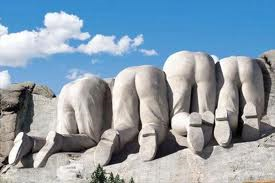

Humble Nanahuatzin sacrificed himself in fire to become the new sun, but the wealthy god Tecciztecatl hesitated four times before he finally set himself alight to become the Moon. Quetzalcoatl, moved by the rabbit's noble offering, elevated her to the Moon, then lowered her back to Earth and told her, "You may be just a rabbit, but everyone will remember you there is your image in light, for all people and for all times."Īnother Mesoamerican legend tells of the brave and noble sacrifice of Nanahuatzin during the creation of the fifth sun. Then a rabbit grazing nearby offered herself as food to save his life. With no food or water around, he thought he would die. Īccording to an Aztec legend, the god Quetzalcoatl, then living on Earth as a human, started on a journey and, after walking for a long time, became hungry and tired.

In Mayan art, glyphs, hieroglyphics, and inscriptions, a rabbit frequently is shown with their Moon Goddess and another deity related to the Moon. The Maya moon goddess frequently is depicted holding a rabbit The trio has become the personifications of the holiday, when they descend to the mortal world and give out cellophane lanterns, mooncakes and gifts to children. In Vietnamese mythology, the Jade Rabbit on the Moon is often accompanied by the Moon Lady and Cuội, who sits under a magical banyan. This legend also gave rise to the Mid-Autumn Festivals of China, Tết Trung Thu of Vietnam, Tsukimi of Japan, and Chuseok of Korea, Sampeah Preah Khae in Cambodia, all of which celebrate the legend of the Moon rabbit. It may be found in diverse cultures in China, Japan, India, Korea, Sri Lanka, Cambodia, Thailand, Vietnam, and Myanmar. The Moon rabbit legend is popular and part of local folklore throughout Asia. The rabbit is believed to be a Bodhisattva.Ī version of this story may be found in the Japanese anthology, Konjaku Monogatarishū, where the rabbit's companions are a fox, instead of a jackal, and a monkey. It is said the lunar image is still draped in the smoke that rose when the rabbit cast itself into the fire. Touched by the rabbit's virtue, he drew the likeness of the rabbit on the Moon for all to see. However, the rabbit was not burnt and the old man revealed that he was Śakra.
#DARKEST SIDE OF THE MOON JUMMP HOW TO#
Knowing only how to gather grass, the rabbit instead offered its own body by throwing itself into a fire the man had prepared. When an old man begged for food from them, the monkey gathered fruits from the trees and the otter collected fish, while the jackal found a lizard and a pot of milk-curd.
#DARKEST SIDE OF THE MOON JUMMP FULL#
In the Buddhist Jataka tales, Tale 316 relates that a monkey, an otter, a jackal, and a rabbit resolved to practice charity on the day of the full moon ( Uposatha), believing a demonstration of great virtue would earn a great reward. Sun Wukong fights the Moon Rabbit, a scene in the sixteenth century Chinese novel, Journey to the West, depicted in Yoshitoshi's One Hundred Aspects of the Moon Unrelated Moon folklore from certain Amerindian cultures of North America also has rabbit themes and characters. In some Chinese versions, the rabbit pounds medicine for the mortals and some include making of mooncakes. In Chinese folklore, the rabbit is often portrayed as a companion of the Moon goddess Chang'e, constantly pounding the elixir of life for her and some show the making of cakes or rice cakes but in Japanese and Korean versions, the rabbit is pounding the ingredients for mochi or some other type of rice cakes in the Vietnamese version, the Moon rabbit often appears with Hằng Nga and Chú Cuội, and like the Chinese version, the Vietnamese Moon rabbit also pounding the elixir of immortality in the mortar.

In East Asia, the rabbit is seen as pounding with a mortar and pestle, but the contents of the mortar differ among Chinese, Japanese, Korean and Vietnamese folklore. The Moon rabbit or Moon hare is a mythical figure in East Asian and indigenous American folklore, based on pareidolia interpretations that identify the dark markings on the near side of the Moon as a rabbit or hare. The image of a rabbit and mortar delineated on the Moon's surface


 0 kommentar(er)
0 kommentar(er)
